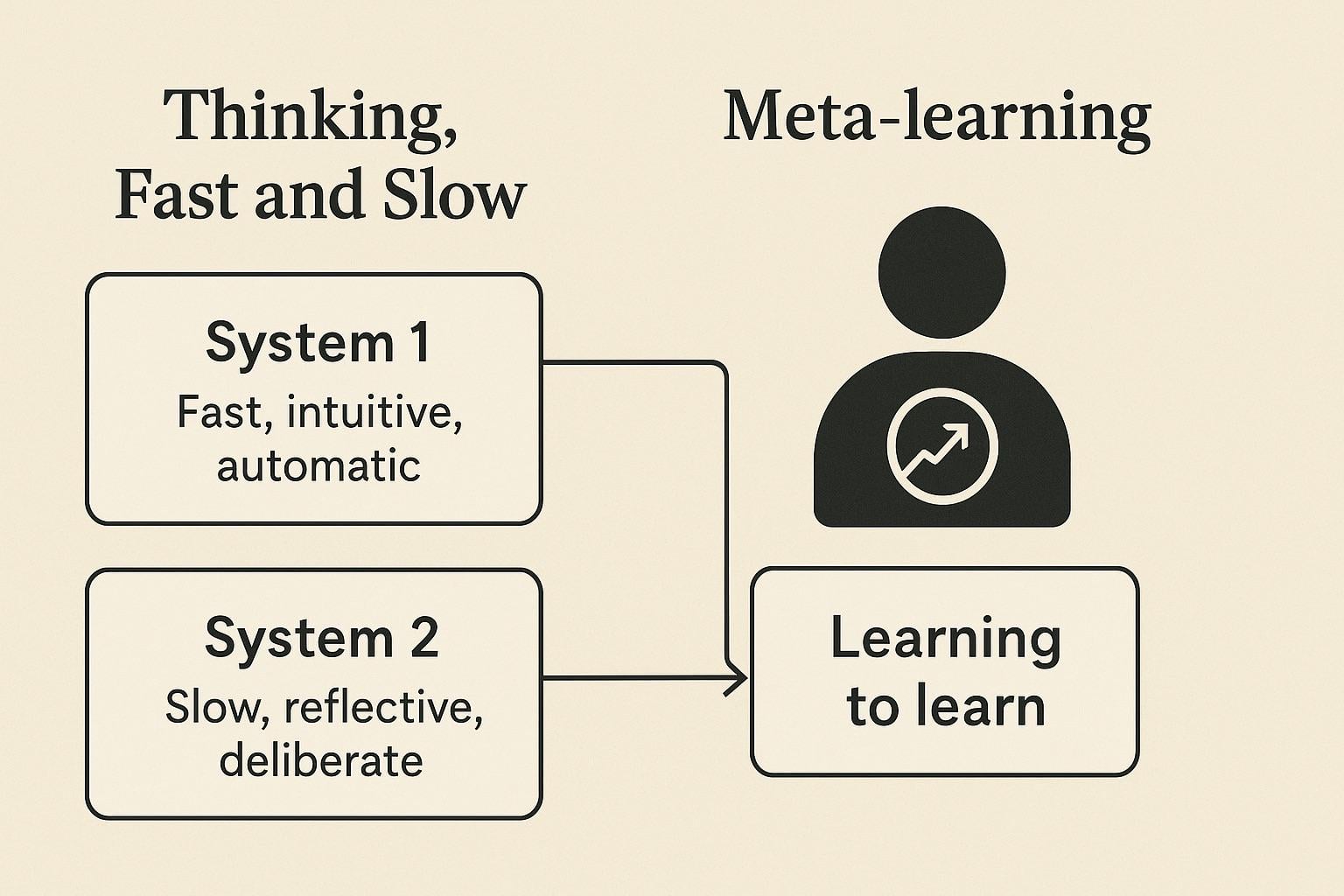
Daniel Kahneman’s Thinking, Fast and Slow distinguishes two systems of human thought. System 1 is fast, intuitive, and automatic — the source of snap judgments, heuristics, and gut feelings. System 2 is slow, analytical, and deliberate — the reflective engine that questions, reasons, and overrides instinct when necessary. This dual-process framework has profoundly shaped psychology, but it also resonates deeply with developments in artificial intelligence — particularly in the field of meta-learning, or “learning to learn.”
Meta-learning operates on the idea that intelligence emerges not just from learning tasks, but from improving how learning itself occurs. In machine learning, a base learner adapts quickly to tasks (analogous to System 1), while a meta-learner observes its performance across tasks and refines its learning strategies (analogous to System 2). The meta-learner doesn’t just store knowledge — it learns how to learn better.
This parallel highlights a deep cognitive symmetry: human reasoning and meta-learning both rely on the interplay between fast intuition and slow adaptation. Over time, System 2’s reflective corrections become internalized into System 1’s automatic responses — just as meta-learning gradually distills slow optimization into fast, efficient performance. Expertise, whether in humans or machines, is the point where the slow learner has successfully trained the fast one.
From this perspective, meta-learning is the computational embodiment of Kahneman’s System 2 — a higher-order mechanism that refines intuitive processes, deciding when to trust them and when to intervene. As AI continues to evolve, bridging these systems offers a profound opportunity: creating machines that not only think fast, but also know when — and how — to think slow.
